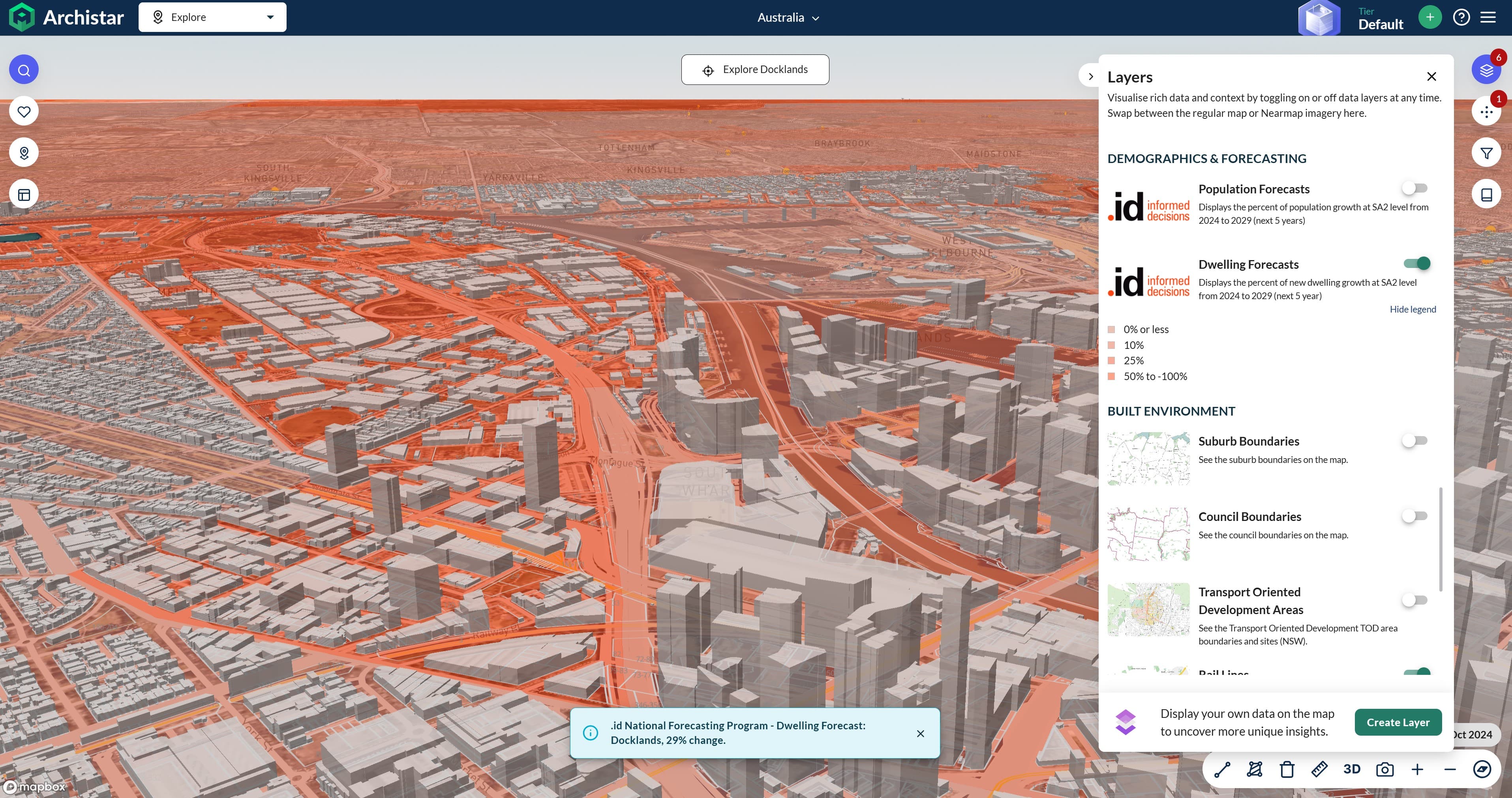Significant population growth is expected throughout large parts of Sydney, both in established and greenfield areas. With outer suburban Sydney seeing particular growth fronts due to the availability of greenfield development areas and increases in medium to high-density housing, let’s take a look at how this will affect future population growth.
Population growth fronts
The South-West is expected to be the fastest growth region in Sydney, with large population increases in a number of local government areas (LGAs). The largest increases in this region are expected in Liverpool, Camden and later in the forecast period, Wollondilly as shown below.
Forecast population of selected outer south-western and southern LGAs, 2016-2040

Source: .id, .id Small Area Forecast information (SAFi), 2016; ABS, Regional Population Growth
The availability of substantial greenfield land is the major reason for high growth rates in these LGAs, particularly in areas of Camden (e.g. Oran Park) and Liverpool (e.g. Carnes Hill). However, as land becomes exhausted in Liverpool and Camden over time, the rate of population growth in Wollondilly is expected to increase as more development fronts emerge.
Forecast population growth, selected outer south-western and southern LGAs, 1991-2040

Source: .id, .id Small Area Forecast information (SAFi), 2016; ABS, Regional Population Growth
By comparison, established areas such as Fairfield and Sutherland are expected to have moderate growth driven by medium and higher density development. Key challenges to this growth in South-Western Sydney relate to the accessibility of employment, with South-Western Sydney considered job-poor compared to other parts of Sydney. While improvements to the rail network with the opening of the Leppington Railway line have enhanced job accessibility, congestion and long travel times continue to trouble this region. Hopefully, the opening of the Badgerys Creek Airport in the future will help to alleviate these problems, with vast increases in local employment!
Forecast population change, Oran Park and surrounding small areas, 2016-2040

Source: id, .id Small Area Forecast information (SAFi), 2016, displayed in id.Placemaker
What about the other outer regions of Sydney?
Blacktown will retain its status as the largest LGA in NSW based on substantial greenfield and infill development. Similar to the South-West, the North-Western corridor is expected to grow substantially as seen below.
Forecast population growth, selected northern and western LGAs, 1991-2040

Source: .id, .id Small Area Forecast information (SAFi), 2016; ABS, Regional Population Growth
Growth is currently centred around Blacktown (e.g. Colebee and Schofields), The Hills Shire, and Hawkesbury (e.g. Beaumont Hills and North Richmond). Aside from greenfield development, Blacktown and The Hills Shire are also forecast to grow through higher densities, notably around more established areas such as Blacktown itself.
There is also significant growth expected in Penrith. The area has a substantial amount of identified greenfield land and a number of centres, notably Penrith CBD are expected to increase in density over the next 25 years.
Forecast dwelling change, Central Coast areas, 2016-2040

Source: id, .id Small Area Forecast information (SAFi), 2016, displayed in id.Placemaker
The trend of acquiring new greenfield development areas and building higher density housing in established areas is stretched across most of outer suburban Sydney including Central Coast and the Northern Beaches, albeit at varying degrees.
Forecast dwelling change, Northern Beaches areas, 2016-2040

Source: id, .id Small Area Forecast information (SAFi), 2016, displayed in id.Placemaker
.id is a team of demographers, population forecasters, spatial planners, urban economists, and data experts who use a unique combination of online tools and consulting to help governments and organisations understand their local areas. Access our free demographic resources here.















